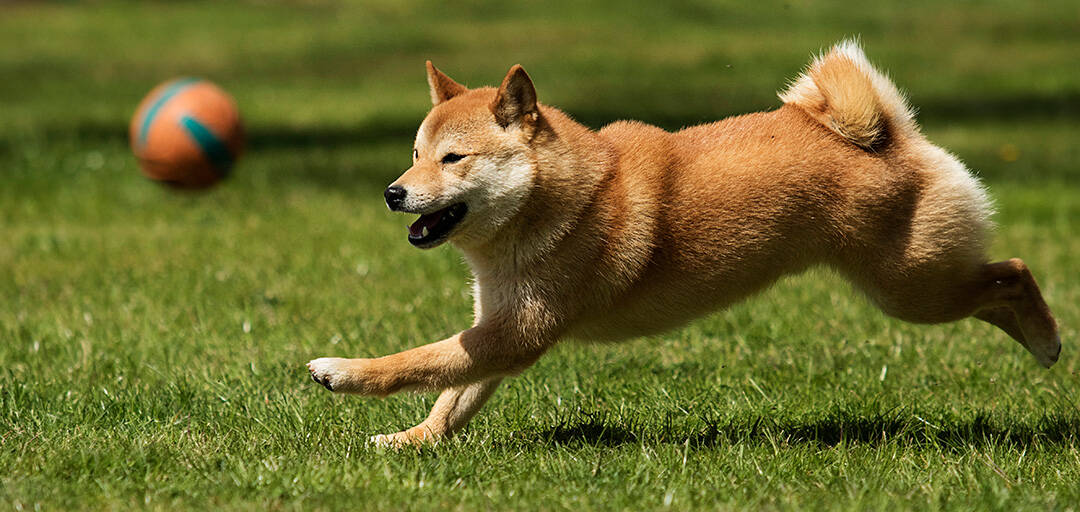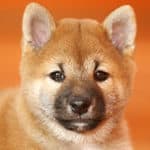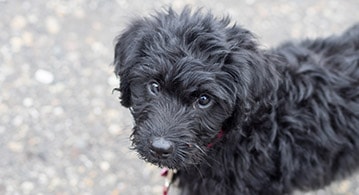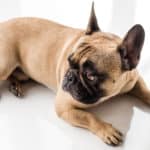Shiba Inu puppies are so adorable that when perfectly still, they are sometimes mistaken for a toy. Like all puppies, they are constantly growing, learning, and changing as they mature. Full of seemingly boundless energy at times, owners sometimes struggle to keep their puppy entertained and out of trouble.
In addition to their charming, good looks, Shiba Inus are known for their playfulness, cunning intellect, and strong-willed determination. These traits are so firmly embedded in their genetic makeup that they are evident even in young puppies. When raised correctly, Shiba Inus are delightful to watch grow up into dignified, yet still playful adults.
How much exercise does a Shiba Inu puppy need? Experts tend to agree that growing puppies need approximately 5 minutes of exercise for each month of age twice daily. So, a 3-month-old puppy needs 15 minutes of exercise two times per day. Repetitive, high-impact motions can cause damage to developing puppies joints.
3 Months Old = 15 Minutes (Twice a day)
6 Months Old = 30 Minutes (Twice a day)
9 Months Old = 45 Minutes (Twice a day)
The prospect of permanent damage from over-exercise is frightening, but don’t worry. There are plenty of safe, fun ways to provide your new puppy with all the exercise he needs. Follow this handy chart to see what is best for puppies.
What Kind Of Exercise Is Good For Shiba Inu Puppies?
| Perfect for Puppies | Too Much Stress |
| Walks around the block on leash, keeping it casual and fun. |
Jogging or biking for any significant stretch might be too much for a smaller puppy. Don’t make them keep up with you, go at her pace. |
| Free play in the yard with some toys. Let them run and play and have fun with them! If things get too exciting try and calm them a bit. | Long stretches of running and really vigorous play at the puppy stage might be too much |
| Walking around the house is always fine for a pup, you can guide him or her along with you to get some exercise. | Climbing stairs, hills, or really long stretches of strenuous activity, you need to watch for signs they are ok. |
| A fun game of fetch or tug of war is a popular way to get in some exercise with puppies around the world! | Again watch for signs of too much. Puppies are still growing and developing. Too much can put strain on joints at this age. |
Suitable Types of Exercise for Puppies
Puppies of all breeds can injure themselves quite easily due to their softer bones and open growth plates. While they may be willing to try anything, puppies can irreversibly damage their joints and skeletal structure by engaging in strenuous or jolting activities.
Shiba Inu puppies do need to exercise daily and low-impact, low-risk pursuits are the safest way to accomplish this. At first, this may sound like a nearly impossible undertaking, but it’s actually quite easy.
Play
If you have ever taken the time to watch a puppy play on his own or with a buddy, you probably noticed that puppy play often occurs in short bursts of high activity followed by a short rest break. This is how nature designed puppies to meet their exercise requirements.
Puppies will engage in mock fights, tug-of-war, wrestling, tag, and games of keep-away when playing with their littermates. These activities allow puppies to expend energy while strengthening their muscles and learning social skills simultaneously.
To meet your pup’s exercise requirements, it’s best to mimic nature and simply let your puppy play. A short walk is okay too, but his main form of exercise should be play. Easy, right?
Pay attention to your puppy’s cues during playtime. If he stops and lies down in the middle of a dash around the yard, his body is telling him that he’s had enough. Let him rest.
To avoid injury, never encourage a puppy to overexert himself.
Exploration
Puppies are naturally very curious about the world around them and will enthusiastically explore as much as they can. As they explore, their little brains are bombarded with information that helps them learn about and become comfortable with their surrounding environment.
As a puppy scampers about searching for a new adventure, all five of his senses are actively involved and steadily sending signals to the brain. So, simply allowing your puppy to explore different environments is a terrific workout for not only his energetic little body but also his rapidly developing mind.
Puppies of This Active Breed Might Enjoy These Activities
Because aggression can become an issue with Shiba Inus who are not properly socialized and trained, extra care should be taken during periods of structured playtime. As the puppy matures, wrestling, tug-of-war, and even chase can sometimes instigate more aggressive play and therefore should not be encouraged with this breed.
There are a variety of structured activities that a playful puppy might enjoy while meeting his exercise needs at the same time. Leading your puppy in guided activities is also excellent for developing trust and strengthening the mutual bond that already exists.
Taking your puppy on brief excursions over various terrains such as pavement, grassy parks, woodland trails, or hills can be a wonderful break from the ordinary and will delight all of his senses. These outings will also help with the pup’s socialization as you come across other people, dogs, and situations.
Many Shiba Inu puppies love to play fetch. If your puppy is still quite young, try gently rolling the ball just a few feet and encourage him to retrieve it. Older puppies, of course, can enjoy a more spirited version.
Taking your puppy on a short walk with breaks periodically for a quick training session will provide your pup with both physical and mental exercise. After a few minutes of walking and exploring, stop and practice the “sit” command. On your next stop, practice a different command. You get the idea.
If your yard is securely fenced, try leaving a treat trail for your puppy to discover. While he’s busy elsewhere, head outside and drop a piece or two of kibble every couple of inches in a straight line and then sit back and enjoy watching him dash about. Over time, increase the distance between treats and work in some twists and turns.
Larger cities often have businesses that cater to puppies, offering safe play areas filled with toys and even regularly scheduled group playtimes. If something similar isn’t available locally, head over to the park, become friendly with fellow puppy owners and set up a time for a playdate.
How Often Should You Walk a Shiba Inu?
While adult Shiba Inus generally need one longer walk per day, puppies will benefit more from one or two short walks per day. Remember, the goal is to meet his exercise needs, not exhaust him and potentially cause harm.
The “5 minutes per month of age” rule applies to walking as well. A 2-month-old puppy should do fine with a 10-minute walk in the morning and again in the evening. A puppy who is 6 months old should be able to handle a brisk 30-minute walk twice daily.
Provide Mental Stimulation to Keep Negative Behavior at Bay
Boredom often fosters negative behaviors such as nuisance barking or destructive chewing. Shiba Inus are highly intelligent dogs and need plenty of problem-solving opportunities and mind-stretching games.
With a puppy, socialization activities can provide mental stimulation. Introduce him to as many different environments, situations, people, and animals as possible. Present him with the chance to play in a shallow body of water or with a hose in the backyard.
Puzzle games, toys of various textures, and games of hide-and-seek can also pique his interest and stimulate his mind. When he needs a change of pace, try hiding treats throughout the house and let him track them down.
A Collar or Harness? Which Is Better for a Shiba Inu?
Having both a collar and a harness is highly recommended for Shiba Inus. They both serve different purposes and each one has advantages and disadvantages.
Collar
A standard collar is simple to attach and remove, and it securely holds all those important identification tags. A collar can be safely used on dogs that do not tend to pull when walking on a leash. However, collars are easily slipped off by little escape artists and can damage the neck of dogs who pull when on-leash.
Harness
A harness takes a bit more effort to attach and remove but greatly reduces the likelihood of an escape. Harnesses that have the leash attachment in the front can also help correct pulling issues and offer more control for the owner.
Related Questions
Are Shiba Inus difficult to train?
A Shiba Inu’s tendency towards stubbornness coupled with his self-governing nature can cause training to be a challenge. Impossible? Certainly not. A tad difficult? Maybe. A good deal of time and patience and plenty of positive reinforcement and consistency will be needed to train this breed.
How far can a Shiba Inu run?
An adult Shiba Inu who is in top shape and has been gradually conditioned to long-distance running may be capable of running for 3 – 5 miles, though most Shiba Inus tend to prefer shorter sprints. Shiba owners know the question is not if they can run for miles, but rather do they want to.





